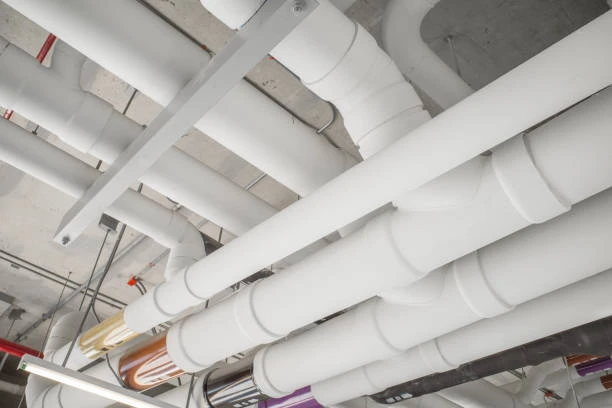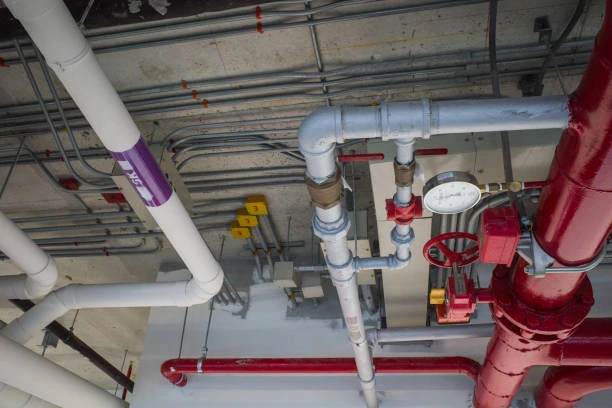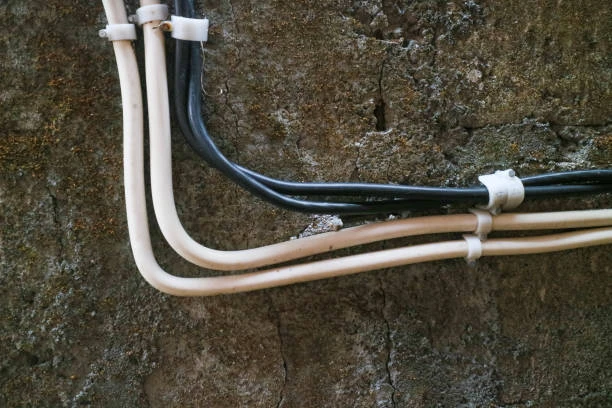Introduction: Enhancing Safety in Methane Transport with Copper Ball Valves
Methane is a critical component in energy production, used extensively in heating, fuel cells, and industrial processes. However, due to its highly flammable nature, methane pipelines require exceptional sealing integrity and safety. One of the most dependable solutions for controlling flow in such systems is the copper ball valve. With durable construction, precise sealing mechanisms, and manual operation through a hand valve, copper ball valves provide a reliable barrier in methane distribution.
In this article, we explore the sealing design features of copper ball valves specifically tailored for methane pipelines. We’ll also discuss common applications, purchasing guidance, installation tips, and how these valves compare with plastic alternatives.
Frequently Asked Questions (FAQ)
1. Can copper ball valves be safely used in methane pipelines?
Yes, copper ball valves—especially those made from brass or bronze—are suitable for methane lines, provided the sealing materials are compatible with natural gas.
2. What type of seal is best for copper valves in gas systems?
PTFE (Teflon) seats and seals are widely used for methane due to their resistance to gas permeability and temperature fluctuations.
3. How does a hand valve help in emergency situations?
A hand valve allows manual control, making it possible to quickly shut off methane flow in case of leaks or maintenance.
4. Do copper ball valves require regular maintenance?
They are generally low-maintenance, but for methane applications, regular leak testing and seal inspections are recommended every 6–12 months.
5. What standards should a copper valve meet for methane use?
Look for certifications such as EN 331 (gas valves), ISO 9001 (quality), and others that confirm performance in combustible gas environments.
Definition and Features of Copper Ball Valves
Copper ball valves are mechanical shut-off devices that use a spherical disc—called a ball—to control the flow of gas or liquid. The ball contains a hole that aligns with the flow path when open and rotates 90 degrees to close off flow. These valves are manually operated using a hand valve or handle, which provides full control during operation or emergencies.
Key Features:
Material Composition: Often made from brass (a copper-zinc alloy) or bronze, resistant to corrosion and mechanical wear.
Sealing Mechanism: Uses PTFE or reinforced polymer seals for gas-tight performance.
Manual Operation: Easy to operate with a hand valve for rapid open or shut-off control.
Pressure Rating: Suitable for working pressures typically found in gas lines, from low-pressure residential systems to high-pressure industrial pipelines.
Thermal Resistance: Performs well under a range of operating temperatures, often between -20°C and 120°C.
These features make copper ball valves especially useful in methane distribution networks where safety and leak prevention are top priorities.
Common Applications and Industrial Usage
Copper ball valves have wide-ranging applications in gas and fluid systems, particularly in environments that require quick shut-off or regular flow control. In methane pipeline systems, they serve critical safety and operational functions.
Common Applications:
Residential Gas Distribution: Used in home heating and kitchen gas lines for manual shut-off and safety control.
Industrial Methane Processing: Employed in refining and energy production facilities for section isolation and maintenance operations.
Compressed Natural Gas (CNG) Stations: Installed in fuel stations to manage methane flow to compressors and storage tanks.
Power Plants: Used in turbine gas feed systems to manage flow during operations and shutdowns.
Emergency Shut-Off Systems: Integrated into safety loops that rely on the manual closure of the hand valve to prevent accidents.
Across these industries, copper ball valves often work alongside more complex controls but remain vital for safety and redundancy.
Buying Guide: What to Look For When Selecting a Copper Ball Valve
Choosing the right copper ball valve for a methane pipeline system involves understanding both performance and compliance. Here are the key criteria to consider:
1. Material Quality
Look for valves made from high-quality DZR brass or bronze, which resist corrosion and stress cracking from gas exposure.
2. Sealing Material
Opt for PTFE (Teflon) or other gas-rated elastomers. These materials ensure a tight seal and resist permeation from methane molecules.
3. Handle Design
Choose a well-insulated, colour-coded hand valve for easy operation and identification. Red or yellow handles typically indicate gas flow lines.
4. Certification and Compliance
Ensure the valve complies with relevant standards such as EN 331 for gas valves, ISO 9001 for quality assurance, and others as required in your region.
5. Size and Bore Type
Select full-port (full-bore) valves when minimal pressure drop is necessary. Reduced-bore designs may be acceptable in non-critical lines.
6. Operating Pressure and Temperature Range
Check the pressure rating (typically 10–40 bar) and temperature tolerance to ensure compatibility with your pipeline conditions.
These considerations help guarantee performance and reliability, especially in environments where methane poses high risk if not properly managed.
Installation Tips: Ensuring Safety and Longevity
Even a high-quality copper ball valve can underperform if installed improperly. Follow these guidelines to ensure a leak-free and reliable system.
Best Practices for Installation:
Inspect All Components
Ensure the valve, seals, and threads are free from damage or manufacturing defects before installation.Use Approved Thread Sealant
Use PTFE tape or gas-rated paste sparingly to prevent over-application, which could affect sealing surfaces.Align Valve Correctly
Position the valve so that the hand valve is accessible and the flow direction aligns with the marking.Tighten Appropriately
Over-tightening can damage threads or distort the body. Follow the manufacturer’s torque recommendations.Pressure Test After Installation
Conduct a leak test under system pressure to confirm proper sealing before full operation.Label Clearly
Mark the valve and its purpose clearly, especially in multi-line or industrial settings.
These measures help maintain the integrity of the valve throughout its service life, particularly in methane systems where small leaks can have major consequences.
Comparison Table: Copper Ball Valve vs Plastic Valve
| Feature | Copper Ball Valve | Plastic Valve |
|---|---|---|
| Material Strength | High – withstands pressure and heat | Moderate – can deform under high pressure |
| Sealing Performance | Excellent with PTFE seats | Fair – dependent on material composition |
| Methane Compatibility | Excellent with proper seals | Variable – may degrade with gas exposure |
| Service Life | Long – up to 20 years with maintenance | Shorter – more prone to wear |
| Cost | Medium to High | Low to Medium |
| Installation Ease | Simple with standard plumbing tools | Also simple, but less robust in connection |
| Temperature Tolerance | Wide range | Limited in high-temperature applications |
| Certifications Available | EN 331, ISO 9001, others | Fewer certifications for gas systems |
While plastic valves may serve low-pressure or non-critical fluid systems, copper ball valves are the preferred option for gas applications, particularly for methane, where strength and sealing are paramount.
Conclusion: Copper Valves Deliver Reliability in Methane Systems
Copper ball valves, equipped with robust sealing and easy-to-use hand valve operation, offer a dependable solution for methane flow control. Their strong resistance to corrosion, excellent sealing with PTFE materials, and durable construction make them a key component in residential, commercial, and industrial methane distribution networks.
Whether you’re replacing an old valve or designing a new pipeline system, copper ball valves remain a trusted choice for safety, efficiency, and long-term value—especially when dealing with volatile gases like methane.
Connect
IFAN is a Chinese manufacturer of plastic pipes, fittings, and valves with over 30 years of industry experience. Our copper ball valves are engineered for durability and performance in gas, fluid, and high-pressure applications. Whether you’re sourcing components for methane pipelines or looking for cost-effective hand valve solutions, IFAN has a product range tailored to your needs.
For more information or technical support:
For more information,pls visit our webside https://waterpipefitting.com/
Pls Mailto: [email protected]
Whatsapp: +86 15088288323
We respond to all emails or faxes within 24 hours. You’re welcome to call us directly with any product-related questions.
IFAN Products and International Standards
All IFAN products adhere strictly to global standards, ensuring performance and safety across diverse industries. Our certifications include:
ISO 15874, EN 15874, ASTM F2389, DIN 8077/8078, GB/T 18742, ISO 15494, ASTM D1785 SCH40/80, DIN 8061/8062, EN ISO 1452, AS/NZS 1477, CSA B137.3, JIS K6741, and many more.
These certifications guarantee that IFAN valves—including our copper ball and hand valve series—meet the demands of modern engineering and industrial gas control systems.














Recent Comments